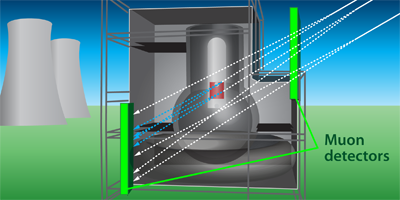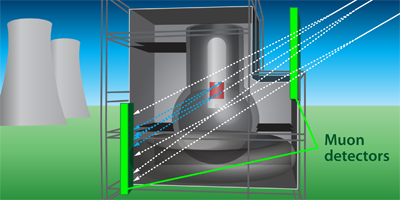Peeking into Fukushima’s Reactors
Workers at Fukushima Daiichi power plant have come up with creative ideas to assess the conditions of the reactors damaged in the 2011 nuclear accident, sending balloons and robots to explore the highly radioactive environment. Yet the presence of debris, obstructions, and vapors has limited the effectiveness of such explorations. Writing in Physical Review Letters, Konstantin Borozdin at the Los Alamos National Laboratory, New Mexico, and colleagues propose an alternative method that uses cosmic-ray muons, a part of natural background radiation, to obtain a radiographic image of the reactor cores.
Cosmic rays are charged particles, mostly protons, coming from outer space and hitting the Earth at high speeds. Colliding with molecules in the atmosphere, they generate a shower of other particles. These include muons, sort of heavier versions of electrons that, if sufficiently fast, can penetrate many meters into materials. This property first enabled an intriguing imaging application in 1969, when a team led by Luis Alvarez used muon radiography to search for hidden chambers in the Egyptian pyramids of Giza.
To radiograph inaccessible parts of Fukushima reactors, Borozdin et al. propose a similar approach based on muon detectors placed right outside the reactor building. The authors compared two imaging methods: attenuation radiography, which measures how muons are absorbed inside the reactor, and scattering radiography, which monitors how their path is deviated. They show that scattering radiography would deliver more reliable images of the nuclear core after only a few weeks of measurement, allowing the visualization of melted fuel as well as debris.
While their sources remain to a large extent a mystery, cosmic rays might help us decipher one of our own human misfortunes. – Matteo Rini





